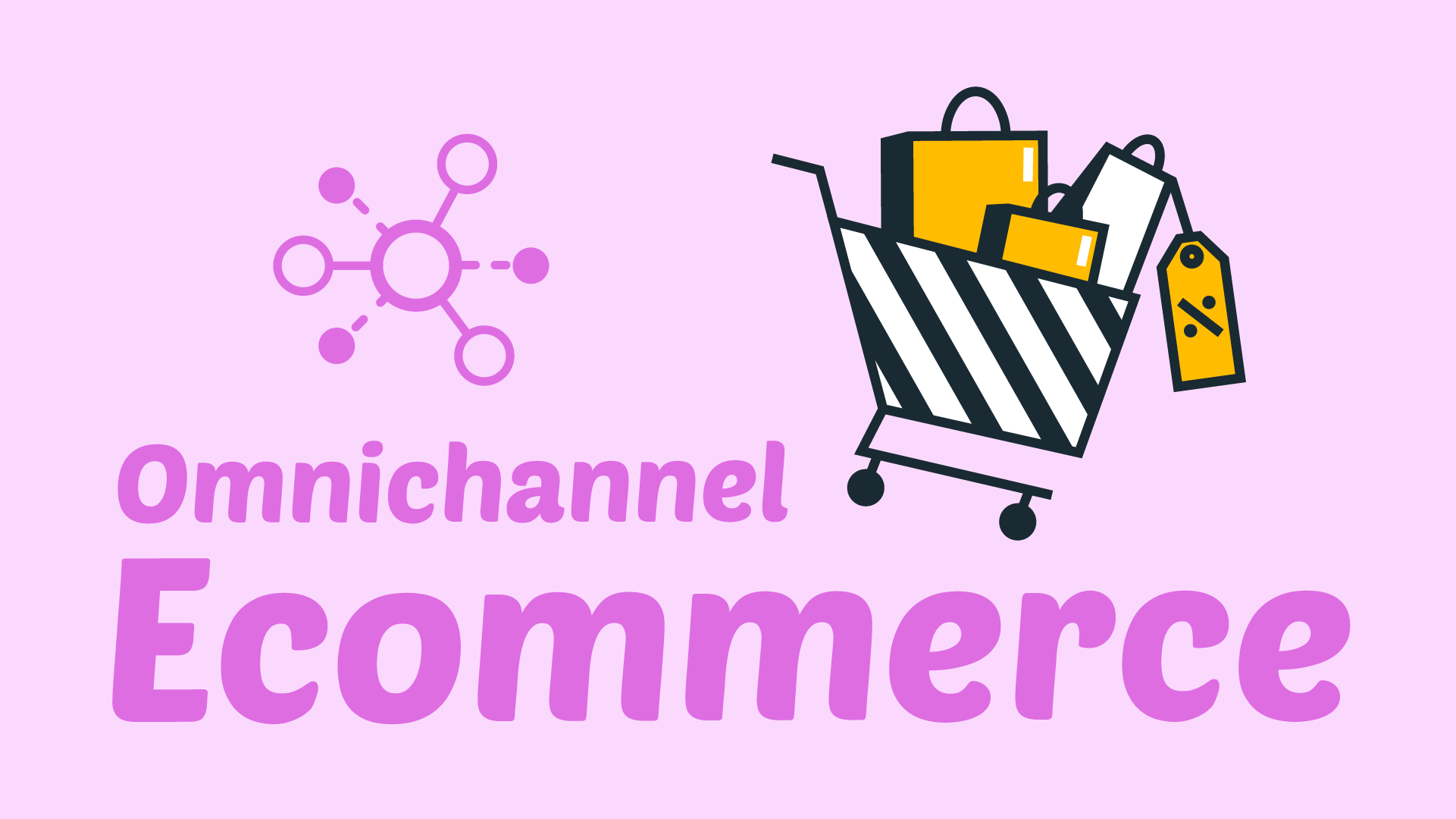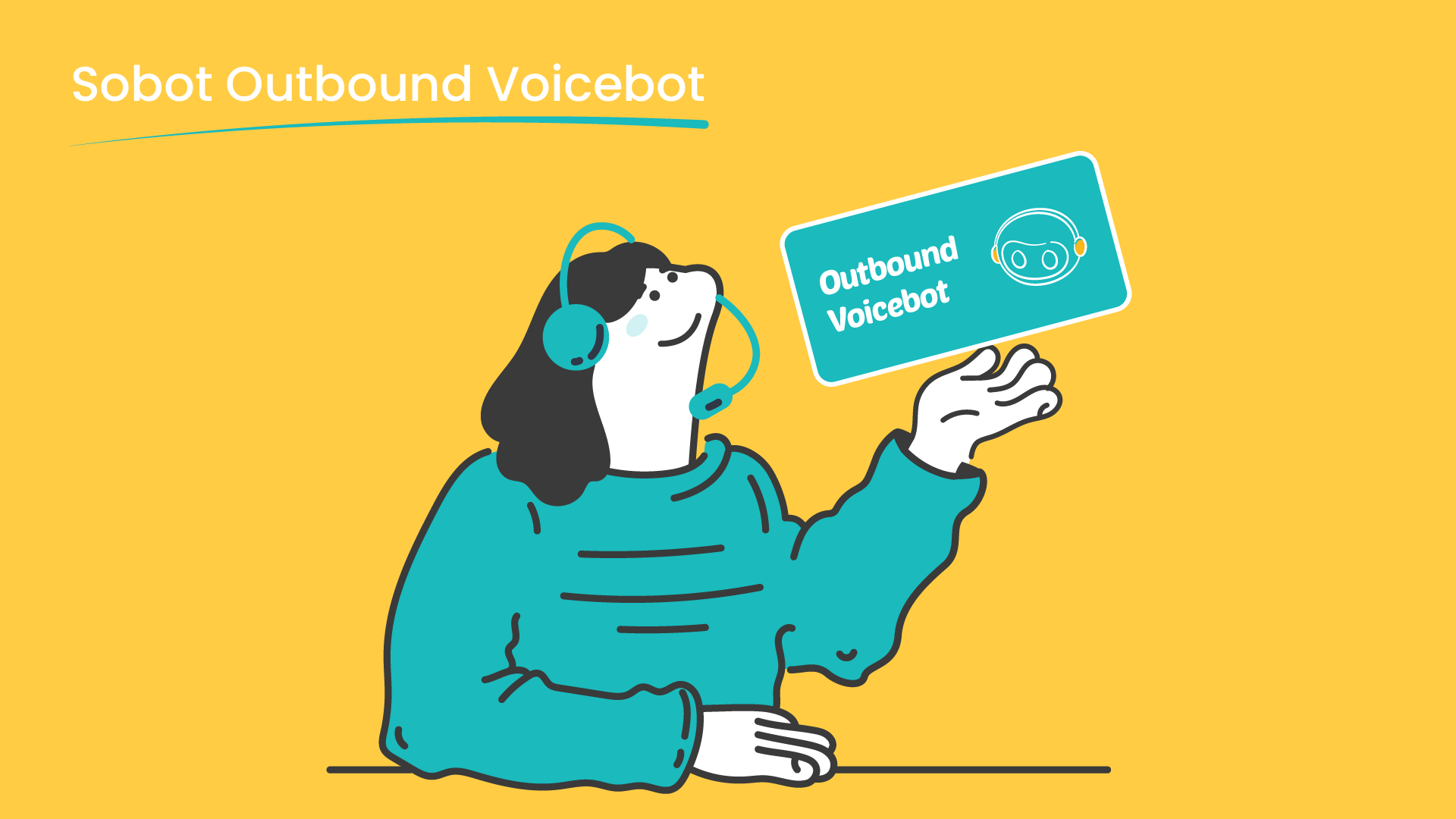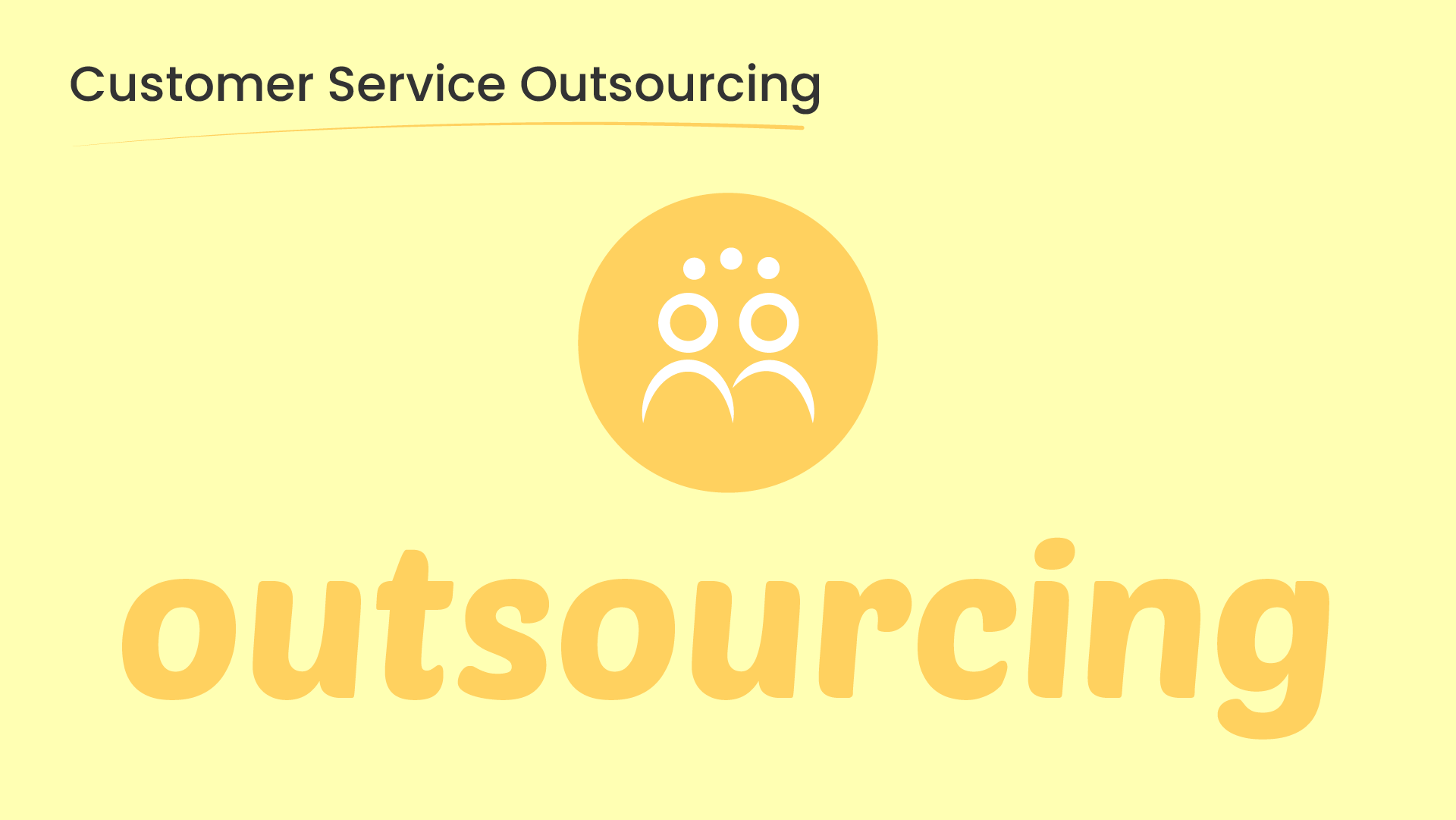We are seeing countless brands actively expanding into new sales channels. No longer is a simple online store or a brick-and-mortar presence enough. Today’s customers demand a seamless, integrated shopping experience across all touchpoints. This shift has catapulted omnichannel ecommerce fulfillment into the spotlight.
As we look towards 2025, the ability to effectively manage and execute omnichannel ecommerce fulfillment will increasingly define success in the competitive retail and ecommerce environment. This approach is not just about selling everywhere; it’s about delivering a consistent and convenient brand experience, regardless of how or where a customer chooses to interact.

KEY TAKEAWAYS:
This article explains what omnichannel ecommerce fulfillment is, its benefits, and key strategies for success in 2025. The article will also touch upon how Sobot’s intelligent solutions can empower businesses in their omnichannel journey.
- Omnichannel ecommerce fulfillment integrates all sales channels to provide a unified and seamless customer experience.
- Benefits include faster delivery, improved inventory utilization, and enhanced customer satisfaction.
- Successful implementation in 2025 hinges on strategies like deep channel integration, leveraging automation and AI, offering flexible fulfillment options, and utilizing data for personalization.
- Intelligent solutions like Sobot will help accelerate the transition to omnichannel fulfillment.
What is Omnichannel Ecommerce Fulfillment?
Omnichannel ecommerce fulfillment refers to a fulfillment strategy where all sales channels (e.g., physical stores, website, mobile app, social media, marketplaces) are seamlessly integrated to provide customers with a unified and consistent shopping experience.
This means that inventory, customer data, and order management are centralized, allowing customers to browse, purchase, receive, and return products through whatever combination of channels they prefer.
Retailers like Nike and Walmart have leveraged omnichannel fulfillment by using their stores as micro-fulfillment centers, enabling services such as buy-online-pickup-in-store (BOPIS) and same-day delivery. These strategies reduce shipping times and costs while improving customer satisfaction.
Main Processes Involved:
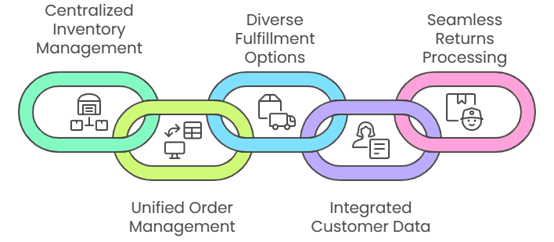
- Centralized Inventory Management: Real-time visibility of inventory across all locations (warehouses, stores, distribution centers).
- Unified Order Management: A single system (often an Order Management System) to manage orders from all channels. This is critical for efficient omnichannel order fulfillment.
- Diverse Fulfillment Options: Supporting options like ship-from-store, buy online pickup in-store (BOPIS), buy online return in-store (BORIS), and ship-to-home.
- Integrated Customer Data: A single view of the customer, regardless of the channels they use, to enable personalized experiences.
- Seamless Returns Processing: Easy and consistent return options across all channels.
Many fastest growing ecommerce companies attribute their success to robust omnichannel strategies. For instance, retailers that allow customers to check the in-store availability of a product online, purchase it via a mobile app, and then opt for curbside pickup are prime examples of omnichannel ecommerce fulfillment in action. Another example is a customer receiving personalized offers via email based on their in-store purchase history, then making a subsequent purchase through a social media ad, with the item shipped from the nearest store with available stock. These scenarios highlight how integrated systems improve convenience and customer engagement, leading to increased sales and loyalty.
Multichannel Fulfilment vs. Omnichannel Fulfilment
While both multichannel and omnichannel involve selling through multiple channels, the key difference lies in integration.
- Multichannel: Businesses operate on multiple channels, but these channels often work in silos. Inventory might be separate, customer data isn’t shared, and the customer experience can be disjointed. For example, a product bought online might not be returnable in a physical store.
- Omnichannel: All channels are interconnected and work together harmoniously. The focus is on the customer journey, ensuring a consistent and seamless experience regardless of the channel.
Benefits of Omnichannel Ecommerce Fulfillment
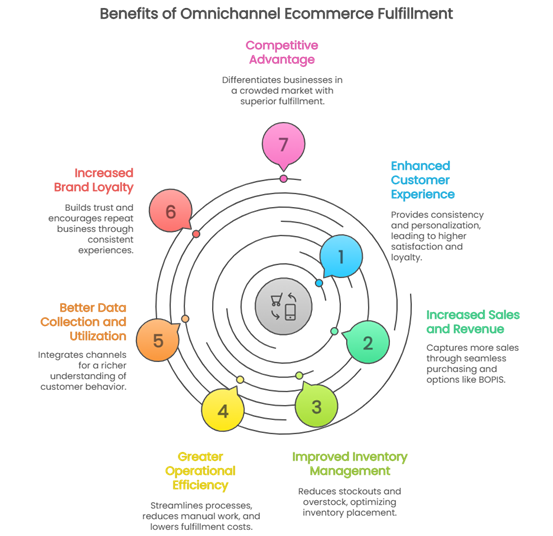
Adopting an omnichannel ecommerce fulfillment strategy offers a wealth of benefits for businesses:
- Enhanced Customer Experience: This is the cornerstone. Customers enjoy consistency, convenience, and personalization, leading to higher satisfaction and loyalty.
- Increased Sales and Revenue: By being available where customers shop and making the purchasing process seamless, businesses can capture more sales. Options like BOPIS can also drive incremental in-store purchases.
- Improved Inventory Management: Centralized inventory visibility reduces stockouts and overstock situations, optimizes inventory placement, and can lower holding costs. Efficient retail fulfillment is a direct outcome.
- Greater Operational Efficiency: Streamlined processes through systems like Order Management System (OMS) and Warehouse Management System (WMS), reduce manual work, minimize errors, and lower fulfillment costs. This makes overall ecommerce management more effective.
- Better Data Collection and Utilization: Integrating channels provides a richer understanding of customer behavior, enabling more targeted marketing and personalized experiences.
- Increased Brand Loyalty: A positive and consistent experience across all touchpoints builds trust and encourages repeat business.
- Competitive Advantage: In an increasingly crowded market, superior omnichannel ecommerce fulfillment can be a significant differentiator.
2025 Key Strategies for Omnichannel Ecommerce Fulfillment
As we move further into 2025, several key strategies may be paramount for successful omnichannel ecommerce fulfillment:

1. Deep Omnichannel Integration and Seamless Shopping Experience
This goes beyond just being present on multiple channels. It requires true integration of backend systems, primarily through robust OMS and WMS. An OMS centralizes order information from all sales channels, while a WMS optimizes warehouse operations and inventory.
This integration ensures real-time data flow for inventory, orders, and customer information, enabling a truly seamless experience where transitions between online and offline channels are invisible to the customer.
2. Automation and AI
Automation and AI technology are key to handling the complexity of omnichannel ecommerce fulfillment efficiently. This includes automated order routing, inventory replenishment, and customer communications.
AI and Machine Learning (ML) can further optimize logistics, predict demand, personalize customer interactions, and improve fraud detection. The rise of generative AI in ecommerce offers exciting possibilities for creating personalized product descriptions, marketing copy, and even powering sophisticated customer service chatbots that can handle complex queries across channels.
3. Flexible Delivery and Return Options
Modern consumers expect choices. Offering a variety of delivery options (e.g., standard, expedited, same-day, BOPIS, ship-from-store, curbside pickup) and equally flexible, hassle-free return processes (e.g., return to store, return by mail, pickup returns) is crucial. This flexibility caters to diverse customer needs and preferences, significantly impacting satisfaction.
4. Data-Driven Personalized Experiences and Decision-Making
The integrated nature of omnichannel ecommerce fulfillment generates vast amounts of customer data. Leveraging this data through analytics allows businesses to understand customer preferences and behaviors deeply. This insight enables personalized marketing messages, product recommendations, and tailored shopping experiences across all touchpoints. Data should also drive strategic decisions regarding inventory placement, fulfillment strategies, and channel optimization.
Sobot: Intelligent Solutions Empowering Omnichannel Ecommerce Fulfillment
In the quest for seamless omnichannel ecommerce fulfillment, businesses often turn to specialized technology providers. Sobot is an example of a company that offers intelligent solutions that help unify customer interactions and streamline backend operations for omnichannel retail and ecommerce.
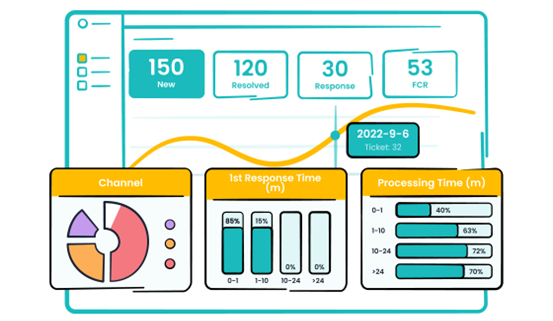
- Integrated Communication Tools: Offering platforms that manage customer interactions across various channels (chat, email, social media, voice) from a centralized dashboard.
- Unified Customer View: Consolidating customer data from all channels (online, offline, mobile, social) into a single profile to enable personalized service and marketing.
- Streamlined Workflows: Helping to automate and optimize fulfillment processes and customer service operations across the omnichannel spectrum.
- AI-Powered Enhancements: Implementing AI tools such as intelligent chatbots for ecommerce customer service, smart routing for inquiries, and analytics for customer insights.
- Data Analytics and Reporting: Providing robust analytics to track key performance indicators (KPIs) related to sales, customer satisfaction, and operational efficiency in an omnichannel setup.
- Data Privacy and Security: Sobot places great emphasis on data security, utilizing advanced encryption technologies, multi-factor authentication, and strict access controls to ensure the safety of customer data during transmission and storage.
By leveraging such intelligent solutions, businesses can better manage the complexities of omnichannel order fulfillment and deliver the seamless experiences modern customers expect.
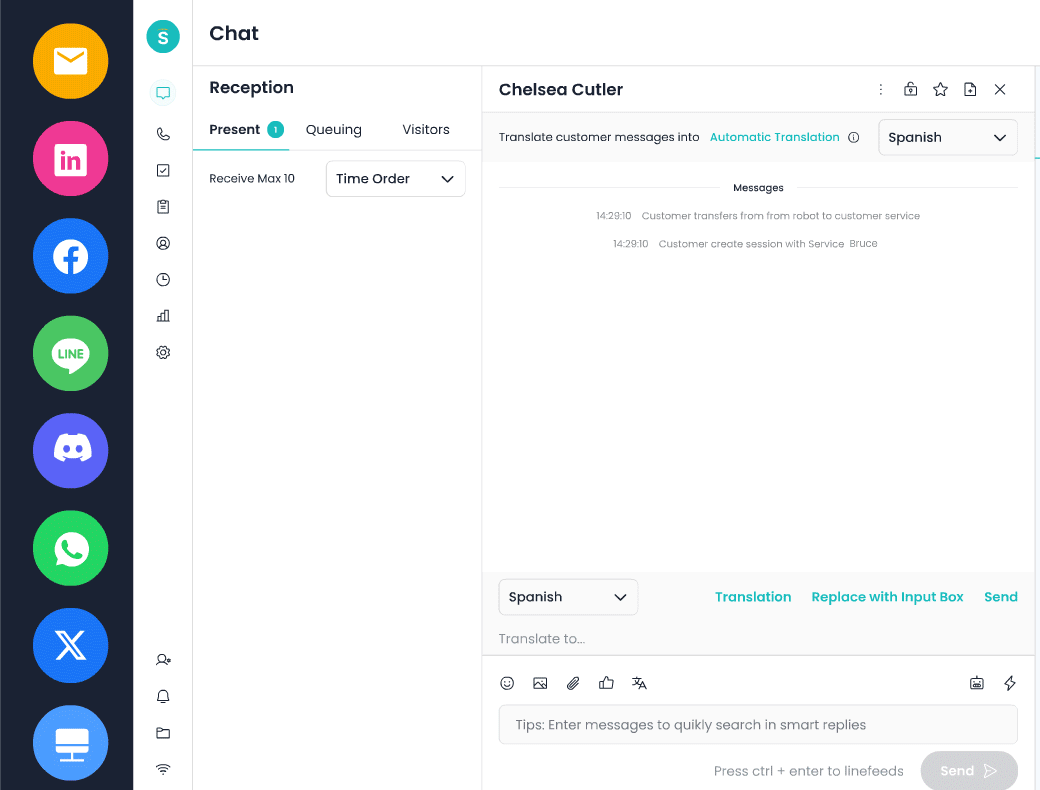
FAQs
How can you transition to omnichannel ecommerce fulfillment?
Transitioning to omnichannel ecommerce fulfillment is a significant undertaking that requires careful planning. Key steps include:
- Developing a clear ecommerce strategy plan that outlines your omnichannel goals.
- Investing in the right technology, particularly a robust customer service system, Order Management System (OMS), and potentially a Warehouse Management System (WMS), to integrate all your sales channels and inventory.
- Centralizing your inventory management to have a single view of stock across all locations.
- Training your staff across all channels to handle omnichannel processes (e.g., in-store staff managing online orders for pickup).
- Focusing on creating a seamless customer journey, mapping out all potential touchpoints.
- Partnering with experienced technology providers and consultants, potentially including solutions like those offered by Sobot, can provide the necessary tools and solutions to streamline this transition.
Can omnichannel fulfillment increase your ecommerce sales?
Yes, absolutely. Omnichannel ecommerce fulfillment can significantly increase sales by improving the customer experience, offering more purchasing conveniences (like BOPIS), reducing lost sales due to stockouts (by enabling fulfillment from any stock point), and increasing customer loyalty, which leads to repeat purchases. A seamless experience makes it easier for customers to buy, leading to higher conversion rates.
What is ecommerce customer service? What are the channels?
Ecommerce customer service refers to the range of support services offered to online shoppers before, during, and after a purchase.
Common channels for ecommerce customer service include: Email, Live Chat, Phone Support, Social Media (direct messages and public interactions), Messaging Apps (e.g., WhatsApp, Facebook Messenger), Self-Service Portals (FAQs, knowledge bases), In-app support, Physical store interactions (for returns, inquiries even for online orders)
The key to omnichannel is that the customer’s history and context should follow them across these channels for a truly supportive experience. Welcome to get a free demo of Sobot’s seamless omnichannel customer experience support.
Is omnichannel fulfillment suitable for your business?
While highly beneficial, the suitability of omnichannel ecommerce fulfillment depends on factors like your business size, product type, customer base, and existing infrastructure.
Businesses with both online and physical stores are prime candidates, as it allows them to leverage all their assets. However, even purely online businesses can adopt omnichannel principles by ensuring seamless experiences across their website, mobile app, social commerce, and customer service channels.
Ultimately, if your customers interact with your brand across multiple touchpoints and expect a fluid experience, transitioning to omnichannel ecommerce fulfillment is likely a strategic necessity for growth and effective ecommerce management. Many of the fastest-growing ecommerce companies have embraced this approach to meet evolving consumer expectations.
